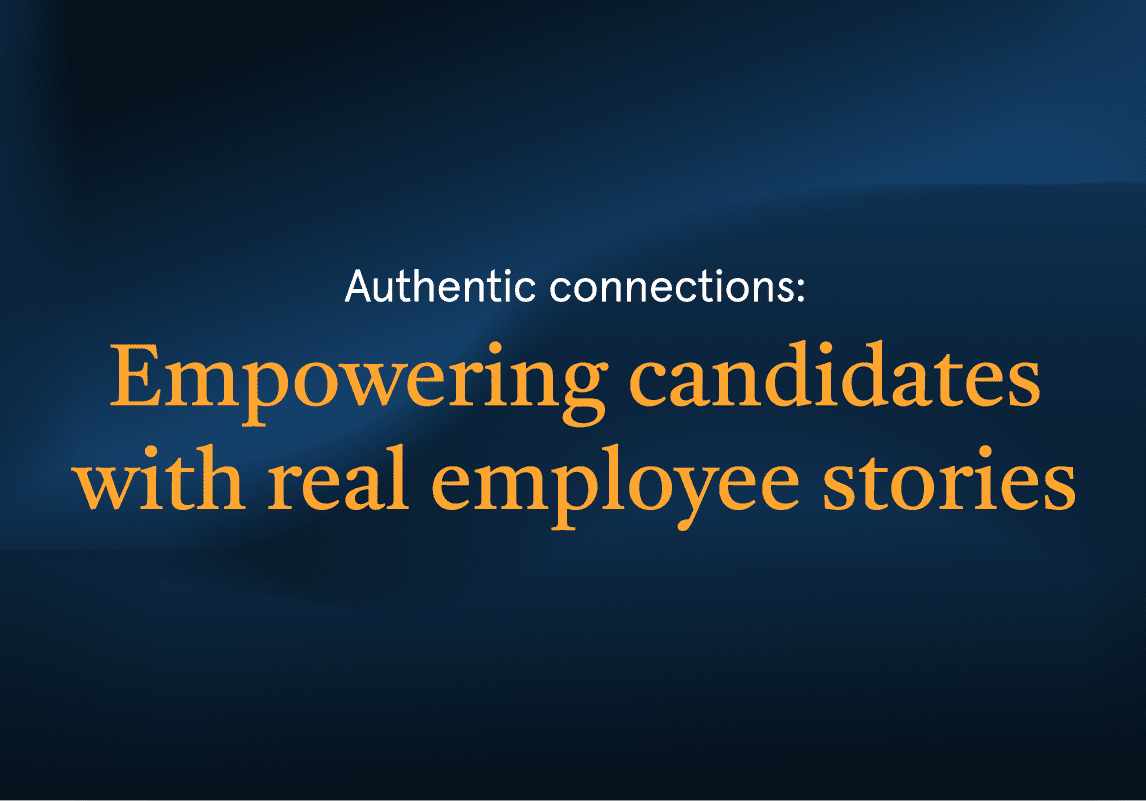So, we hear congratulations are in order? If you are new to an employer branding role at your organization, it is important to remember that there is a good chance you’re the first person your employer has brought on to solely focus on this initiative. Employer brand has long been an aspect of the hiring process that influences candidate attraction and conversion but is not generally budgeted for at the capacity most talent acquisition (TA) practitioners would recommend. By starting in a role specifically dedicated to furthering employer brand efforts, you’re in for a real opportunity to positively influence the candidate journey.
With recruitment marketing resources from Clinch and by leveraging the tips below, you’ll have the tools you need to get started right away. Get ready to set yourself up for employer branding success as you start developing this TA function!
What is employer branding?
Employer branding is a company’s workplace “image” as perceived by the market. Past, current, and future employees have an opinion of what it’s like to work for your company. These opinions are informed by every touchpoint you have with a person—and together, they make up your employer brand.
And seeing that the hiring process generally has quite a few steps (application, screening, multiple interviews, perhaps a project or knowledge-based evaluation, pre-employment assessments) there is a lot of room for positive influence.
Get started
First, work with your TA team to clearly define what your employer brand is. Learn what values are embraced and exhibited within the organization. Work to understand what’s formally documented and what’s embedded into the culture of the organization—both good and bad. That will help you understand what types of goals you might need to set for the coming year.
What’s great and widely celebrated at your organization that you think all candidates should know about? What feedback is recurring in reviews and evaluations that could use some attention? The answer to these types of questions will naturally reveal the top priorities for maintaining, stabilizing, and remedying employer brand where it matters most.
Set goals
After setting the stage of “what is”, move on to “what could be”. This involves setting goals for enhancement and refinement of the employer brand currently at play. Make sure you and your manager are on the same page when it comes to defining these goals. It’s also important to consider goals with a fast time-to-value.
For example, consider having “a lengthy application process” as a consistent point of negative feedback from candidates, employees, and alumni. Since that feedback is probably easy to find via reviews and easy to experience via the actual application itself, that factors into your employer brand. Therefore, if cutting out even one step in the process is an easy fix, then shortening the application process is considered a fast time-to-value. You already know shortening this process would correct for the feedback of “it takes too long to apply”. It’s always good to have goals that are quick improvements of the overall brand as well as those goals that take a little more time to achieve.
Evaluate your success
Finally, plan for how you are going to assess progress on your annual objectives. Brand can prove nebulous to evaluate when Glassdoor reviews and the like rely on personal experience. But you can track some straightforward data points to help develop a clear picture of candidate behavior. You can track the number of visits to your career site, what content visitors are engaging with most, clicks on your jobs page and even specific job descriptions. With the right technology, you can go as far as tracking the number of applications started and completed as well as started and abandoned—including which candidates are tied to those applications. Candidate communications such as emails and texts can be tracked within the recruitment process as well, providing even deeper insight into candidate engagement after candidates have applied. These are all informative metrics about the state of your application process.
Work with your social media team to run organic posts directed to employee connections content, open roles, or culture videos. This team can also help to evaluate the overall sentiment from reviews on LinkedIn, Facebook, and Glassdoor. If you run any campaigns to increase external reviews, measure how many reviews you started with and then the increase at the end of your campaign. Noticing the direction in which your employer brand is trending along with some of the tangible data points like those mentioned above will help set the foundation of your employer brand and point to the areas which need the most influence.
Come back for more thought leadership
Check back often for Clinch helpful resources like 10 steps towards a transparent and authentic candidate experience and more! We are always adding to the Clinch E-book library to support recruitment marketers on a wide variety of topics and host many events with analysts and influencers in the industry. Good luck and we will see you soon!



